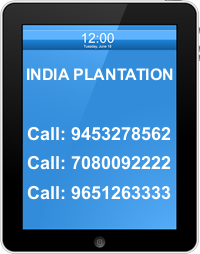Tiwaness Papaya Saplings

In this modern era farming is not less important than business and jobs, you just need to make a right selection of crop, hard work and proper guidance. By doing so you can make more profit than any other business or job.
With this growing scenario of modernization agriculture becomes more profitable than any other business thanks to professional farming and advance technology which helps farmers to reduce the time involved in complete production of the crops which is also have good profit margin as compared to any other crops.
You can also earn more profit through farming of 786 taiwan redlady hybrid papaya. In the several states of India namely Andhra Pradesh, Tamilnadu, Bihar, Asam, Maharastra, Gujrat, Uttarpradesh, Madhyaprdesh, Karnataka the pie of this crop increases. Thus, by cultivating this crop with the help of scientific methods and technology we can make a good profit of ourselves and for the country.
We are cultivating papaya since last 16 years and accumulates a quite different experience in it, which we promise to share with each and every individuals who keeps interest in this crop.
With the drastic change in the field of agriculture the new techniques of papaya cultivation has been developed. This techniques includes mulching, and dripping. For the complete information and guidelines of this techniques please feel free to contact us.
Why Should we do farming of 786 Taiwan Papaya ?
1. By farming of this crop we can earn more profit than any other crop.
2. The fruit of the Papaya do no rancid up to 15 days after complete ripe. That in tern proves helpful in export of this fruits to any other state or country.
3. Papaya plant takes only 4.5 months to give fruits and 8 months to pluck the fruit from the plant.
4. An average production of this crop is 40 to 60 kilograms per plant.
5. It is very delicious in test and beneficial for health.
When should papaya farming must do?

The best time for papaya farming is in between februry to May in Madhay Pradesh and Rajsthan regieon. In this period the production of this crop is better than any other months of the years
How to do farming of 786 Taiwan Papaya?
1. For the cultivation of Papaya crop the soil of the field must be very fertile. The land where rain water accumulates is not fruitful for this crop.
2. Do not grow any other crop with papaya and do not grow papaya with any other crop.
3. Do not grow new papaya crop nearby old once.
4. The distance between each papaya plant must be :
Row to Row distance – 7 Feet
Plant to plant distance – 6 or 7 feet
5. There must be 1000 – 1100 papaya plants per acre.
6. Before the cultivation of this crop the farm must be well equipped with gobar fertilizers i.e. 3 to 5 trolly of the tractor per acre.
7. Also aid 3 to 5 bags of super fertilizer in the field.
8. Keep the plants before 3 to 4 days before actual farming in order to acclimatize the plants in the climate of your region.
9. Do not keep plants in closed room or godown. Instead keep them on the shadow of tree where proper trespassing of air occurred.
10. Farm the plants in field after noon time.
11. Always keep the pump used in spray for this crop separate from other crops.
12. Do not use pesticides or insecticides in papaya plants without consult with us.
13. You can put the papaya crop in between makka crop in order to save the plants from the sun.
14. Once the papaya plants grow to a minimum height cut out the makka crop from the field.
15. Irrigation of the plants must be in accordance with need. It requires more irrigation in summer.
16. Gather the surrounding soil to the plant before rainy days.
17. Cut out the unshaped fruits from the plant before they get at most 250kg/fruit.
18. After first rain paint the plants with copper sulphate or lime below the fruits height.
Fertilizers after 1 month from the farming. (Basis: Per Acre) [Note: Encirle the fertizer around the plant in 1-1.25 ft diameter.]
1. Calcium Nitrate – 15 KG.
2. Zinc Sulphate – 15 KG.
3. Humic Acid (Granular) – 5 KG.
4. Potash – 50 KG.
Fertilizers after 2 Months from the farming [Note: 1-1.5 ft vertically front and back from the plant]
1. DAP – 75 KG.
2. Potash – 75 KG.
Fertilizers after 4 Months from the farming [Note: 1-1.5 ft vertically front and back from the plant]
1. DAP – 75 KG.
2. Micro Nutrient – 10 KG.
3. Potash – 75 KG.
4. Ammonium Sulphate – 30 KG.
5. Magnesium Sulphate – 30 KG.

